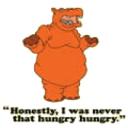Yahoo Answers is shutting down on May 4th, 2021 (Eastern Time) and beginning April 20th, 2021 (Eastern Time) the Yahoo Answers website will be in read-only mode. There will be no changes to other Yahoo properties or services, or your Yahoo account. You can find more information about the Yahoo Answers shutdown and how to download your data on this help page.
Trending News
Could someone please explain these set theory functions to me?
U = {I, II, III, IV, V, VI, VII, VIII}
A= {I, II, IV, V}
B= {II, III, V, VI}
C= {IV, V, VI, VII}
I do not know how to enter the functions, so I typed them in word format.
1. A intersection ( B Union C)
2. ( A intersection B) Union C
3. ( A complement B) complement
1 Answer
- 10 years agoFavorite Answer
Intersection means you take everything that is in BOTH sets, so A intersect B would be:
A intersect B = {II, V}
Union means you take everything that is in EITHER set. So A union B would be:
A union B = {I, II, III, IV, V, VI}
A relative complement (A complement B) means you take everything that is in A and remove everything that is in B
An absolute complement (A complement) means you take everything that is in the universe (U) and subtract everything that is in the set, it is equivalent to the relative complement (U complement A)
Example:
A complement = U complement A = {III, VI, VII, VIII}
So for 1.
B union C = everything in B or C = {II, III, IV, V, VI, VII}
now,
A insect (B union C) = everything in A and (B or C) = {II, IV, V}
2. Is similar to 1.
3.
(A complement B) = Everything in A that is not in B = {I, IV}
now
(A complement B) complement = U complement (A complement B) = Everything in U that is not in (A complement B) = {II, III, V, VI, VII, VIII}
Source(s): School



